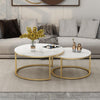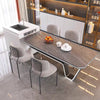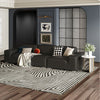The Psychology of Furniture: How It Affects Your Mood and Behavior

When it comes to creating a comfortable and inviting home, many people focus on the color scheme, lighting, and layout. But did you know that the furniture you choose can also have a significant impact on your mood and behavior? Furniture is not just about aesthetics and functionality; it also has a psychological influence on how you feel and act in your space. In this blog post, we will explore the fascinating field of the psychology of furniture and discover how the pieces you select for your home can affect your well-being.

Ergonomics: The Science of Comfort
One crucial aspect of furniture psychology is ergonomics, which is the science of designing furniture that is comfortable and supportive for the human body. Ergonomic furniture takes into consideration the physical and physiological needs of the person using it, aiming to reduce discomfort and stress on the body. For example, a well-designed ergonomic chair can provide proper support to your spine, promote good posture, and prevent back pain. On the other hand, an uncomfortable chair can cause discomfort, fatigue, and even mood swings.
The comfort of furniture can greatly influence your mood and behavior. When you are physically comfortable in your furniture, it can help you relax, concentrate, and be more productive. Conversely, uncomfortable furniture can make you feel restless, agitated, and distracted, which can negatively impact your mood and overall well-being. Therefore, investing in ergonomic furniture that prioritizes comfort can have a significant positive effect on your psychological state.
Aesthetics: The Impact of Design and Style
The design and style of furniture can also play a significant role in affecting your mood and behavior. Different styles of furniture evoke different emotions and can create different atmospheres in your home. For example, minimalist and modern furniture with clean lines and simple designs can create a sense of calm and order, which may help reduce stress and anxiety. On the other hand, traditional or vintage furniture with ornate details and warm colors can evoke a sense of nostalgia and comfort, which can create a cozy and welcoming atmosphere.
The colors of your furniture also have a psychological impact. Colors are known to affect our emotions and can influence our mood and behavior. For example, warm colors like red and orange can stimulate energy and excitement, while cool colors like blue and green can promote relaxation and calmness. The color of your furniture can contribute to the overall ambiance of your space and affect how you feel when you are in it.
Functionality: The Role of Purpose and Utility
The functionality and purpose of furniture can also impact your mood and behavior. Furniture serves a specific purpose in your home, whether it's a bed for sleeping, a table for dining, or a desk for working. When furniture is designed with its intended function in mind, it can enhance your experience and performance in that particular activity.
For example, a well-designed desk with ample storage space and proper ergonomics can help you stay organized and focused, leading to increased productivity and a positive mood. On the other hand, a cluttered and disorganized desk can create stress, distraction, and a negative mood. Similarly, a comfortable and inviting sofa can encourage relaxation and socialization, while an uncomfortable or poorly designed one can discourage interaction and inhibit social behavior.
Personalization: The Connection Between Furniture and Identity
The furniture you choose for your home is a reflection of your personality, taste, and style. Personalization plays a significant role in the psychology of furniture. When you select furniture that resonates with your personal preferences and aligns with your sense of identity, it can positively impact your mood and behavior.
For example, if you prefer modern and minimalist designs, having furniture that matches





